Powering Digital Business with Intelligent Multidomain Master Data Management SaaS
Last Published: Aug 16, 2023 |
Digital Business Requires Multidomain Master Data Management (MDM)
Businesses in every industry feel today’s pressure to innovate their products and services, transform business models and operations, and improve customer experience to stay competitive in a digital-first world. And while customer is a key domain of data for digital business, managing the entire value chain of your business depends on your ability to manage and connect data from multiple domains—customer, product, supplier, location, cost center, and more.
Announcing Informatica Intelligent Multidomain MDM SaaS
Last year we announced the release of Customer 360 SaaS, the first cloud-native 360 application for delivering a 360-degree view of the customer. With Multidomain MDM SaaS, we are now taking the underlying MDM foundation that we used to build Customer 360 SaaS and making it available to the market to manage any and all domains of master data.
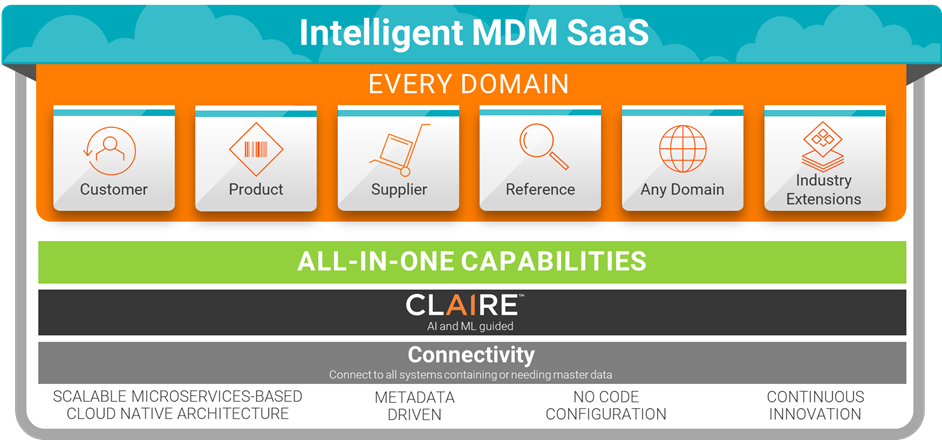 Figure 1: A single cloud solution for all domains of master data.
Figure 1: A single cloud solution for all domains of master data.
Multidomain MDM SaaS Addresses Changing Business Needs
Like all technology-enabled business disciplines, the capabilities required for the practice of master data management are constantly evolving. We started with a cloud-native microservices architecture, followed user-centric design principles, and utilized the market-leading services and AI-powered automation of Informatica’s Intelligent Data Management Cloud (IDMC) to provide customers with a unique solution to modernize the practice of master data management for today’s world of agile digital business.
Multidomain MDM Improves Business Outcomes Across Industries
Managing digital business requires a 360-degree view of your entire business that includes the relationships between customers, products, suppliers, locations, and other domains of master data. For example, location data is critical in conjunction with other domains of master data to improve business outcomes:
Insurance, Risk-based pricing: Managing and connecting location, asset, claims, and policy data enables property and casualty insurers to build better predictive models around risk exposures at various locations, which improves the accuracy of risk-based pricing that in turn leads to more profitable underwriting decisions.
Retail, Real-Time Customer Engagement: Managing and connecting location, customer, and product data allows retailers to reach shoppers at just the right place and time—sending a promotion when they enter a store or are standing in a specific aisle—as well as providing useful interactive maps to help customers navigate large-layout stores , enhancing the customer’s experience as it increases revenue and improves satisfaction.
Healthcare, Supply-Chain Resiliency: Managing and connecting data for locations, hospitals/clinics, inventory, and suppliers increases visibility of stock levels for hospital networks and improves allocation of inventory across hospitals/clinics in the network and prioritization of replenishment with suppliers to mitigate disruption and improve health outcomes.
Public Sector, Services Delivery: Managing and connecting location, agency, and citizen data helps government agencies improve transportation, healthcare, housing, and delivery of many other services by identifying patterns of service usage by location, as well as helping to improve policy planning.
Consumer Goods, Procurement Cost Management: By managing and connecting location, manufacturing plant, order, and supplier data, organizations can get getter visibility into off-contract spend, capture total volume discounts, and negotiate long-term contracts with strategic suppliers to address price inflation, and minimize non-price costs like logistics.
Cross Industry, ESG Reporting: Managing and connecting location, supplier, and transportation mode data, as well as complex relationships between tier 1 and lower-level tier 2 thru N suppliers is critical to reporting on the carbon emissions across all tiers of a company’s supplier network and managing toward net-zero supply chains.
Key Capabilities of Informatica Intelligent MDM SaaS
The practice of master data management requires a broad set of capabilities that must all work together seamlessly. We provide all the capabilities you need in a single solution including discovery and profiling, modeling of master and reference data, hierarchies and graph relationships, data and application integration, data quality and enrichment, match and merge, task management and workflow, stewardship and governance, security, and dashboards and reporting.
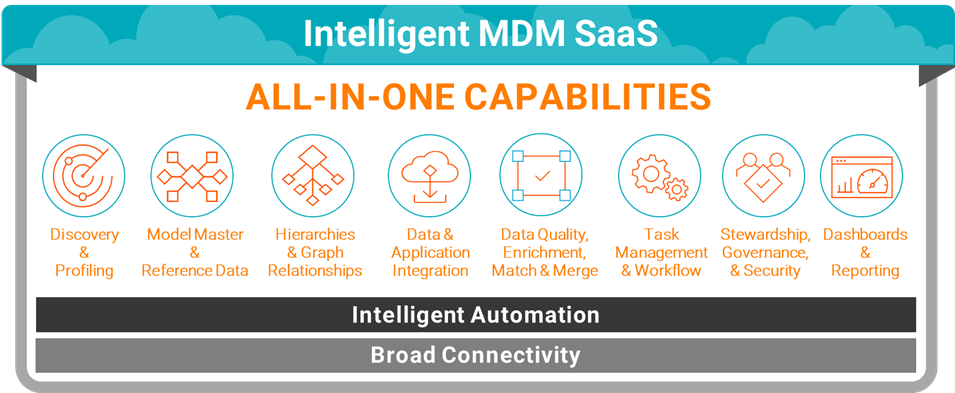 Figure 2: All-in-One capabilities of Informatica Intelligent MDM SaaS
Figure 2: All-in-One capabilities of Informatica Intelligent MDM SaaS
Master Data Connectivity
Connectivity is important for master data discovery, third-party enrichment, synchronization across applications, and orchestration across internal and external business processes. With Informatica Intelligent MDM SaaS, you can choose from an extensive list of prebuilt connectors or join hundreds of customers who have configured custom connectors using low/no code development to integrate and share your master data anywhere it’s needed.
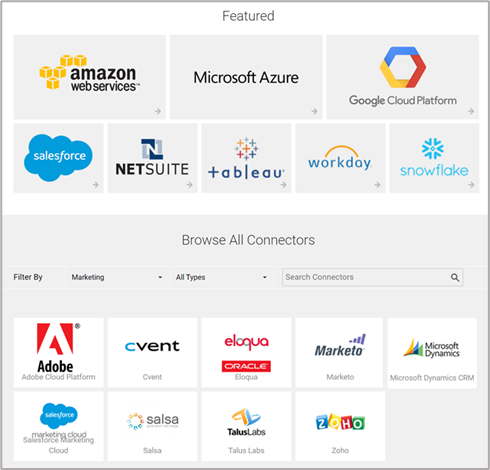 Figure 3: Examples of out-of-box connectors that are available with Informatica Intelligent Multidomain MDM SaaS
Figure 3: Examples of out-of-box connectors that are available with Informatica Intelligent Multidomain MDM SaaS
Master Data and Reference Data Modeling
Informatica Intelligent Multidomain MDM SaaS is a true multidomain solution and provides capabilities to model any type of master and reference data, including (but not limited to) customer, material, supplier, employee, product, location, asset, and cost centers, as well as verticalized variations of those domains. We provide prebuilt data models for customer, finance, and reference data that you can easily extend, or you can create custom data models. You can easily manage all aspects of data modeling from a single pane of glass using an intuitive model configuration screen. With Informatica you can deploy a new domain in weeks instead of months.
 Figure 4: Informatica Intelligent MDM SaaS model configuration interface
Figure 4: Informatica Intelligent MDM SaaS model configuration interface
Master Data Hierarchies and Graph Relationships
Informatica Intelligent Multidomain MDM SaaS enables you to efficiently structure master data relationships to support any analytical and operational use case. We enable all types of hierarchies defining parent-child relationships between business entities such as balanced, unbalanced, ragged, and recursive.
We allow multiple hierarchies to reference the same business entities. For example, the "Informatica Head Office" record could belong to "Informatica" in an organization hierarchy
and to "Informatica LLC" in the Dun and Bradstreet hierarchy. We also allow multiple versions of the same hierarchies at different points in time, enabling easy comparisons between versions to see what’s changed.
Using techniques like column signature analysis, the CLAIRE AI engine can identify primary and unique keys and infer relationships and joins across master data entities. You can then automate the creation of a cross-domain, cross-department, master data knowledge graph, which simplifies navigation and helps with analysis like cross-sell and product substitutions.
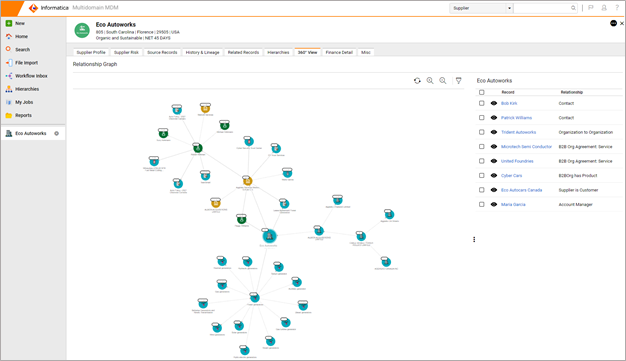 Figure 5: Informatica Intelligent MDM SaaS master data knowledge graph
Figure 5: Informatica Intelligent MDM SaaS master data knowledge graph
Master Data Integration and Application Integration
Once you’ve defined data models, hierarchies, and relationships, you’ll need to onboard data. Informatica multidomain MDM SaaS leverages the integration services of IDMC to support multiple patterns for both ingress and egress of master data such as bulk, batch, and real-time ETL, SOAP, EJB and REST APIs, and message queues. Messaging, API, and event-based publishing capabilities help you seamlessly orchestrate the exchange master data at any latency across cloud, mobile, and on-premises applications used in business processes.
Intelligent Multidomain MDM SaaS simplifies data integration mappings using a canonical staging model that hides the complexity of the underlying data model. And the “Smart Field Mapping” functionality uses the CLAIRE AI engine to combine named entity recognition, a genetic algorithm, and natural language mechanisms to identify fields and field types in data sources and automate the mapping to master data models. The result is a 50% increase in productivity for onboarding master data.
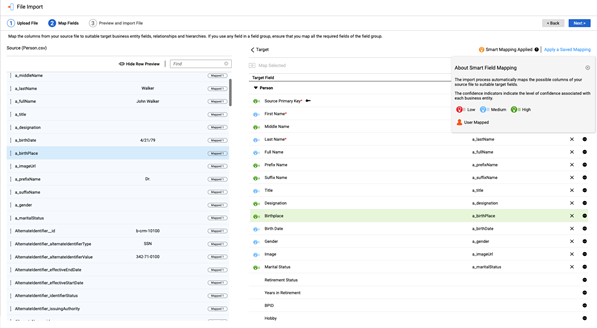 Figure 6: Informatica Intelligent MDM SaaS “Smart Field Mapping” accelerates data onboarding
Figure 6: Informatica Intelligent MDM SaaS “Smart Field Mapping” accelerates data onboarding
Master Data Quality and Enrichment
Informatica Multidomain MDM SaaS enables you to efficiently scale data quality across all master data sources. We provide comprehensive capabilities for batch and real-time modes of profiling, parsing, standardization, validation, and enrichment. Reference data lookups can be embedded into data quality processes, and real-time API calls can also be made to third-party services to validate and verify record input data, such as DUNS number verification, SWIFT/BIC Code verification, and NPI number validation.
Blended machine learning techniques like deterministic, heuristic, and probabilistic are used to automate profiling, cleansing, and standardization. The CLAIRE AI engine can also recommend and associate data quality rules with master data fields in the MDM model and automate execution of those rules across all the master data sources in an enterprise.
We have also created “Smart Fields” at the MDM data model level, which are context-aware fields for common data types such as addresses, phone numbers, and emails. A single checkbox enables MDM to automatically map input and output fields to the Informatica DaaS service for standardization and validated against authoritative sources such as national postal databases.
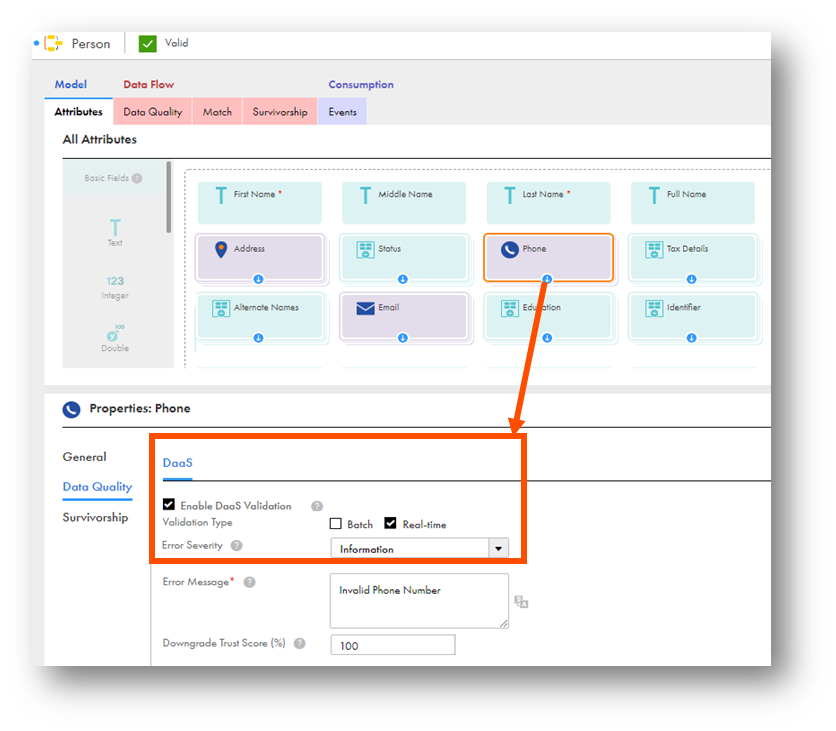 Figure 7: Informatica Intelligent MDM SaaS “Smart Fields” automate data validation
Figure 7: Informatica Intelligent MDM SaaS “Smart Fields” automate data validation
Master Data Match, Merge, and Survivorship
Ensuring accurate, complete, and consistent master data is much easier once master data is deduplicated and records are consolidated in a single golden record. Informatica Intelligent Multidomain MDM SaaS uses a combination of declarative rules and AI algorithms to improve data matching accuracy. The declarative rules encapsulate over 30 years of training and tuning to provide indexing and blocking on multiple fields that filter out as many obviously non-matched pairs as quickly as possible.
With the “Intelligent Match” feature, you can train AI match algorithms in hours instead of spending days manually tuning rules. The CLAIRE AI engine employs active learning designed to enable business subject matter experts and data stewards to train the match engine through supervised learning of labeling match pairs, without requiring upfront manual data analysis or knowledge of the match engine within MDM. The random forest classifier learns from decision trees, which enable understanding of why the model matched or didn’t match records, so the algorithm can determine the best match rules.
We provide fine-grained tuning of match parameters like tightness of match. The “Match Explanation” feature provides full transparency into the calculation behind the match score for a given match pair. High-confidence matches can be auto merged, no matches flagged as unique, and low-confidence matches flagged for review.
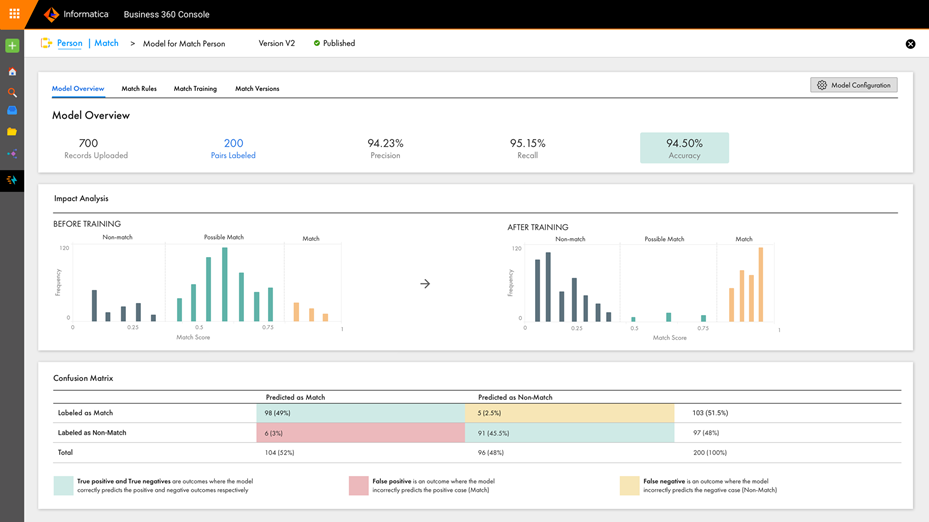 Figure 8: Informatica Intelligent MDM SaaS “Intelligent Match “configuration results
Figure 8: Informatica Intelligent MDM SaaS “Intelligent Match “configuration results
Our patented Trust Framework defines survivorship rules and calculates trust scores at the attribute level. Using survivorship strategies such as source of data, most common value, recency of update, and completeness of data enables us to pick the most trusted source for each field. For example, while a CRM is usually a good source for phone number and email address data, a shipping system is usually a better source for address fields. Trust rules are applied automatically whenever two records are merged, when you update any source record, or whenever records are unmerged.
Master Data Task Management and Workflow
Informatica Intelligent Multidomain MDM SaaS provides a configurable task inbox, which shows data stewards their list of current tasks and the status of each task, with drilldowns to the underlying subtasks. Data stewards, or a task administrator, can reassign tasks to other users to complete, and bulk task administration capabilities allow you to reassign multiple tasks, change their due dates, or reject them at once.
We provide out-of-the-box workflows with preconfigured multi-step approval processes, “Save as Draft” functionality within workflows, and out-of-the-box dashboard measuring workflow progress. Prebuilt function includes create, update, and approve. Customers wishing to customize the workflows can easily do so in a low/no-code drag and drop interface.
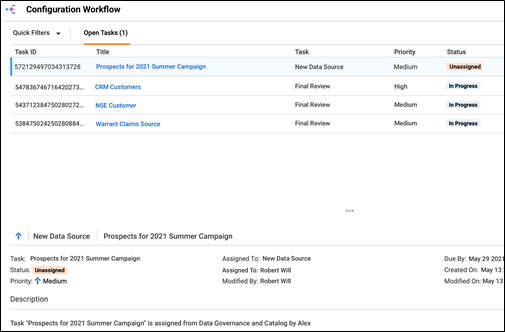 Figure 9: Informatica Intelligent MDM SaaS task in box
Figure 9: Informatica Intelligent MDM SaaS task in box
Informatica Intelligent MDM SaaS uses the WS-BPEL 2.0 and BPEL4People-compliant BPM service of Informatica Intelligent Data Management Cloud. This enables us to cover all business process management needs both internal to MDM (like task management and conditional routing) as well as integrating MDM workflow into large business processes such as delivering personalized offers into specific customer touchpoints and track-and-trace in product recalls.
Master Data Stewardship and Governance
Informatica Intelligent Multidomain MDM SaaS enables data stewards to easily customize interfaces to show only the data and tasks that they are responsible for. Out-of-the-box charts show overdue workflow tasks, with drilldowns to the underlying tasks. We keep a full audit trail of changes including who, what, and when. This includes a timeline capability to search for, view, and compare by effective date. You can also enforce separation of duties between creators and approvers to enforce internal control policies.
Conditional notification and routing capabilities speed identification and remediation of issues. They also enable support for service level agreements (SLAs) that vary based on business entities, source systems, geographic regions, or any attribute of the data. This includes being able to dynamically set due dates for tasks based on conditional SLAs.
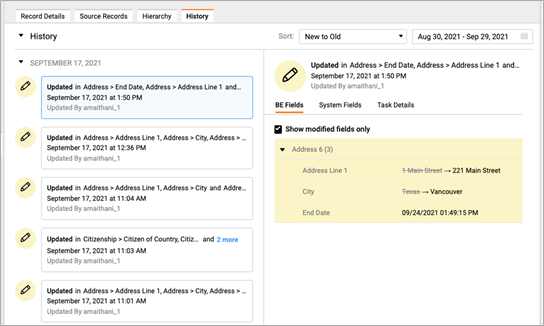 Figure 10: Informatica Intelligent MDM SaaS change history screen
Figure 10: Informatica Intelligent MDM SaaS change history screen
The CLAIRE AI engine helps data stewards and business users prevent data duplication when creating new records. The “Similar Records” recommendation panel slides onto the screen when CLAIRE finds records that look like what’s been entered. This improves data quality at the point of entry and removes the need for matching and merging duplicate records later.
And the Business Entity Services APIs enable you to embed master data stewardship into business applications and processes. You can make REST calls to create, update, delete, and search for base object records and related child records in a business entity, as well as create, update, and delete attachments to tasks and records.
Master Data Dashboards and Reporting
The business user experience is critical to the success of master data management programs. By studying the context in which different people—such as business users, data stewards, application administrators, and analytics teams—use master data management solutions, as well as their end-to-end interaction processes, we’ve been able to design intuitive interfaces, guided workflows, and machine learning recommendations that increases adoption, productivity, and agility.
Informatica Intelligent MDM SaaS “Application Composer” provides a low/no-code dashboard layout experience. Dashboard reports and information layouts can be personalized to provide a contextualized view for different people, organizational functions, and regions, including access to multiple dashboards from a single page. You can also filter reports by attributes, use picklists in search layouts, and run reports on demand or schedule for execution on a regular basis.
 Figure 11: Informatica Intelligent MDM SaaS provides a modern user experience that increases adoption, productivity, and agility
Figure 11: Informatica Intelligent MDM SaaS provides a modern user experience that increases adoption, productivity, and agility
Master Data Security and Privacy
With increased global connectivity and cyber-attacks on the rise, it's critical to protect your master data. Informatica Intelligent MDM SaaS was built with security as a primary design principle. Our product development incorporates Informatica’s Secure Development Lifecycle
to ensure that we eliminate security defects while we develop our products.
Informatica maintains the most stringent cloud security certificates. Data at rest is encrypted using an AES-128 key, data in transit using TLS-1.2 or greater protocol. Our cloud security program focuses efforts and resources across the following areas.
- Application security
- Identity and access management
- Vulnerability management
- Security incident response
- Training and awareness
- Business continuity and disaster recovery
- Governance, risk management and compliance
Informatica Intelligent Multidomain MDM SaaS supports cell level, role-based security. Roles are highly granular and flexible, which allows administrators to implement safeguards according to the security policies of their organization. A user account inherits the privileges configured for any role to which the user account is assigned. We provide multiple authentication options including password-based, SSO-based, certificate-based, and token-based authentication. Access controls are enforced based on privacy policies and user authorizations, and master data can be dynamically masked at query time.
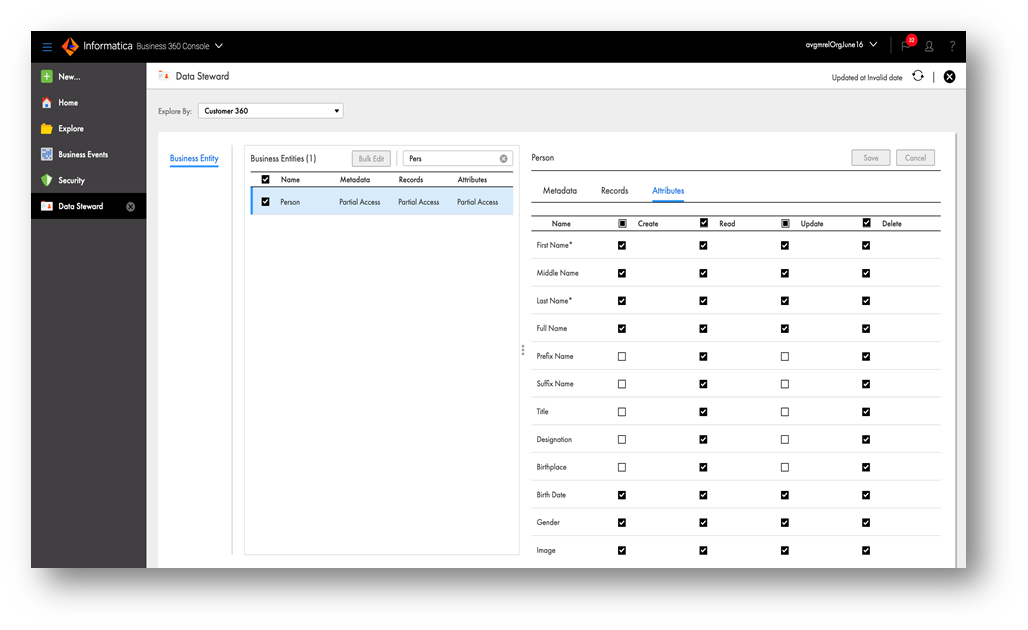 Figure 12: Informatica Intelligent MDM SaaS provide granular access and privilege controls
Figure 12: Informatica Intelligent MDM SaaS provide granular access and privilege controls
Informatica Intelligent Multidomain MDM SaaS also provides real-time monitoring and protection of API-based master data exchange in business processes, allowing you to audit, record, and block sensitive data leakage in API requests and responses. You can select the type of information to protect credit card numbers, personally identifiable information (PII), and tax identification numbers, as well as whether to apply the protection of each information type to requests, responses, or both.
Master Data Extensions and Industry Content
Informatica Intelligent Multidomain MDM SaaS provides prebuilt extensions for common data sources (like Salesforce) and industry content (like healthcare), reducing the need to build data models and integrations to common data sources, and helping customers accelerate deployment and increase return on investment. There is no additional cost for this preconfigured content—customers have access to it as part of their subscription. Partners can build extensions and industry content based on their intellectual property.
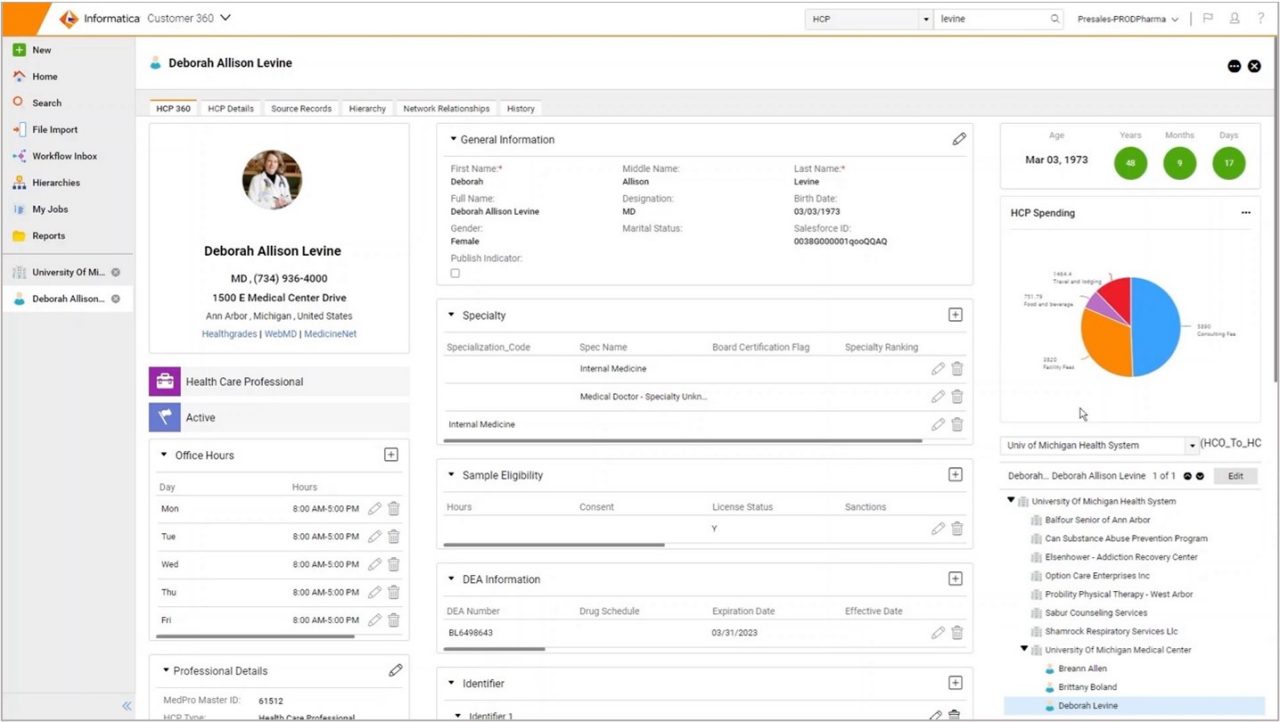 Figure 13: Informatica Intelligent MDM SaaS Healthcare Extension medical provider dashboard
Figure 13: Informatica Intelligent MDM SaaS Healthcare Extension medical provider dashboard
Summary
At Informatica, we’ve created the most modern Multidomain Master Data Management SaaS solution, using a cloud-native microservices architecture, user-centric design principles, and AI-powered automation. Like all technology-enabled business disciplines, the capabilities required for the practice of master data management are constantly evolving to address changing business needs. By utilizing the market-leading services of Informatica’s Intelligent Data Management Cloud (IDMC) we’re able to provide customers with a unique solution to modernize the practice of master data management for today’s world of agile digital business.
- Unlike other vendors that offer old on-premises multidomain products hosted in the cloud, Informatica provides a modern cloud experience that increases adoption, productivity, and agility. By studying the context in which different people—such as data stewards, application administrators, business analysts, and analytics teams—use master data management solutions, as well as their end-to-end interaction processes, we’ve been able to design intuitive interfaces, guided workflows, and machine learning recommendations that simplify the discovery, curation, and consumption of master data for analytical and operational use.
- Unlike other vendors that require third-party offerings to compensate for limited or missing functionality, Informatica provides an all-in-one solution that speeds deployment and reduces cost of ownership. Integrating all the data management capabilities required for the practice of master data management—such as data and process integration, API management, data quality, data modeling, hierarchy and graph relationship management, workflow and task management, reference data management, and security—into a single solution with pre-configured domain and industry content, has enabled us to simplify implementation and administration of multidomain master data management.
- Unlike other vendors that only address a single domain (such as customer), Informatica provides a comprehensive multidomain solution that accelerates business outcomes. Our ability to manage multiple domains of master data and the relationships between domains—such as location, customer, product, supplier, and assets—enables us to support a broad range of digital transformation use cases, including customer experience, digital commerce, supply chain optimization, and finance transformation. This ability to scale across functional areas of the business ensures long term value.
To learn more about Informatica Intelligent Multidomain MDM SaaS, attend our MDM 360 and Data Governance Summit.








